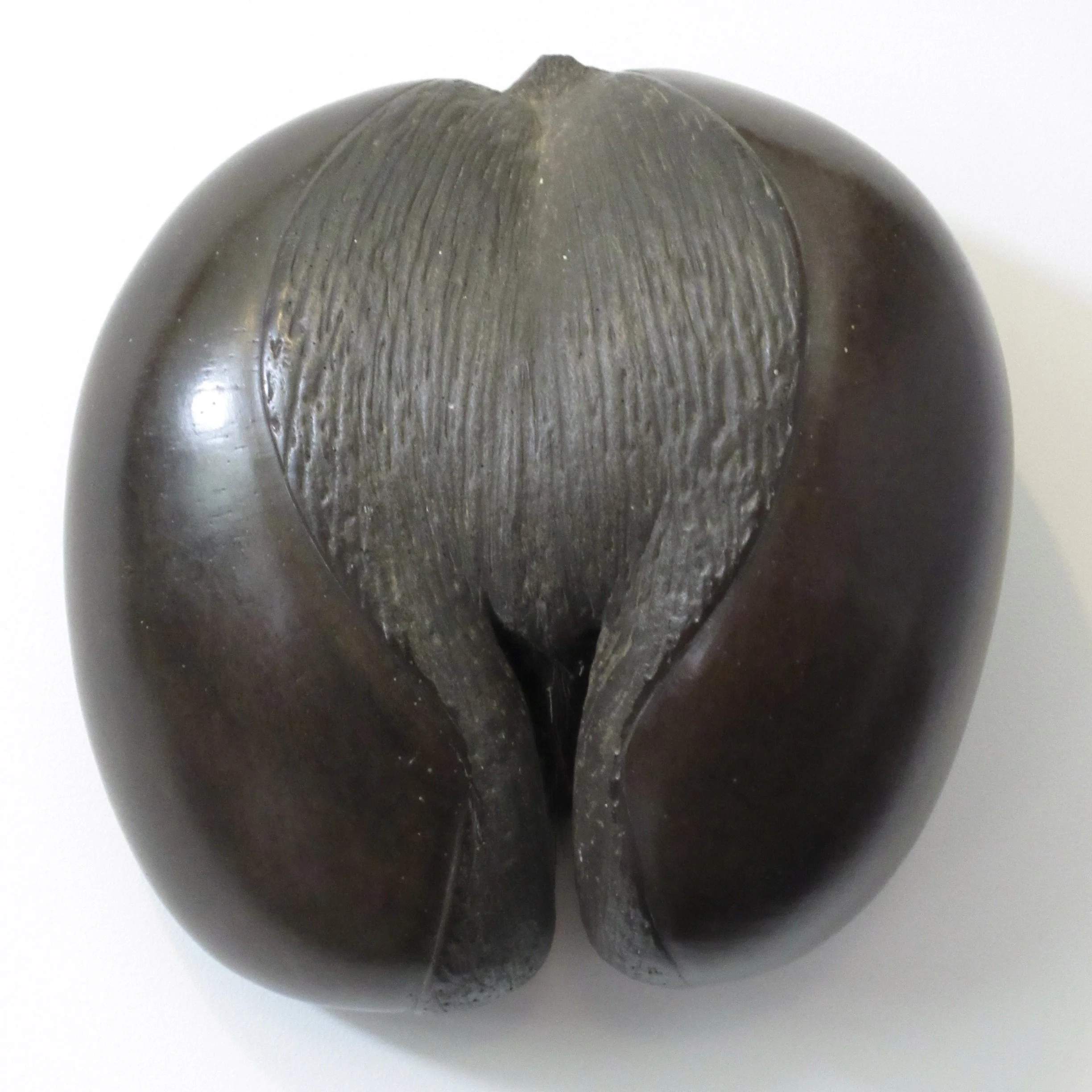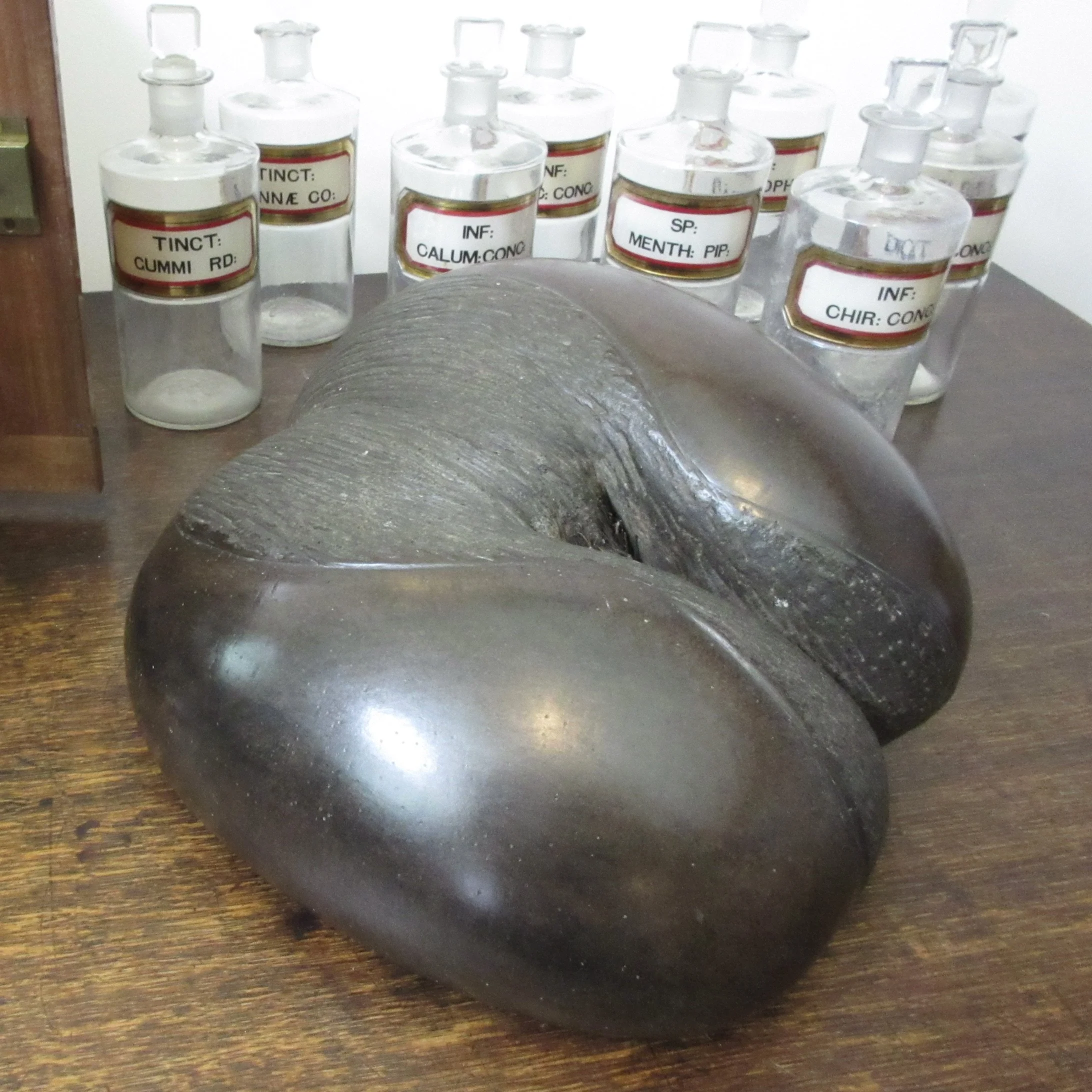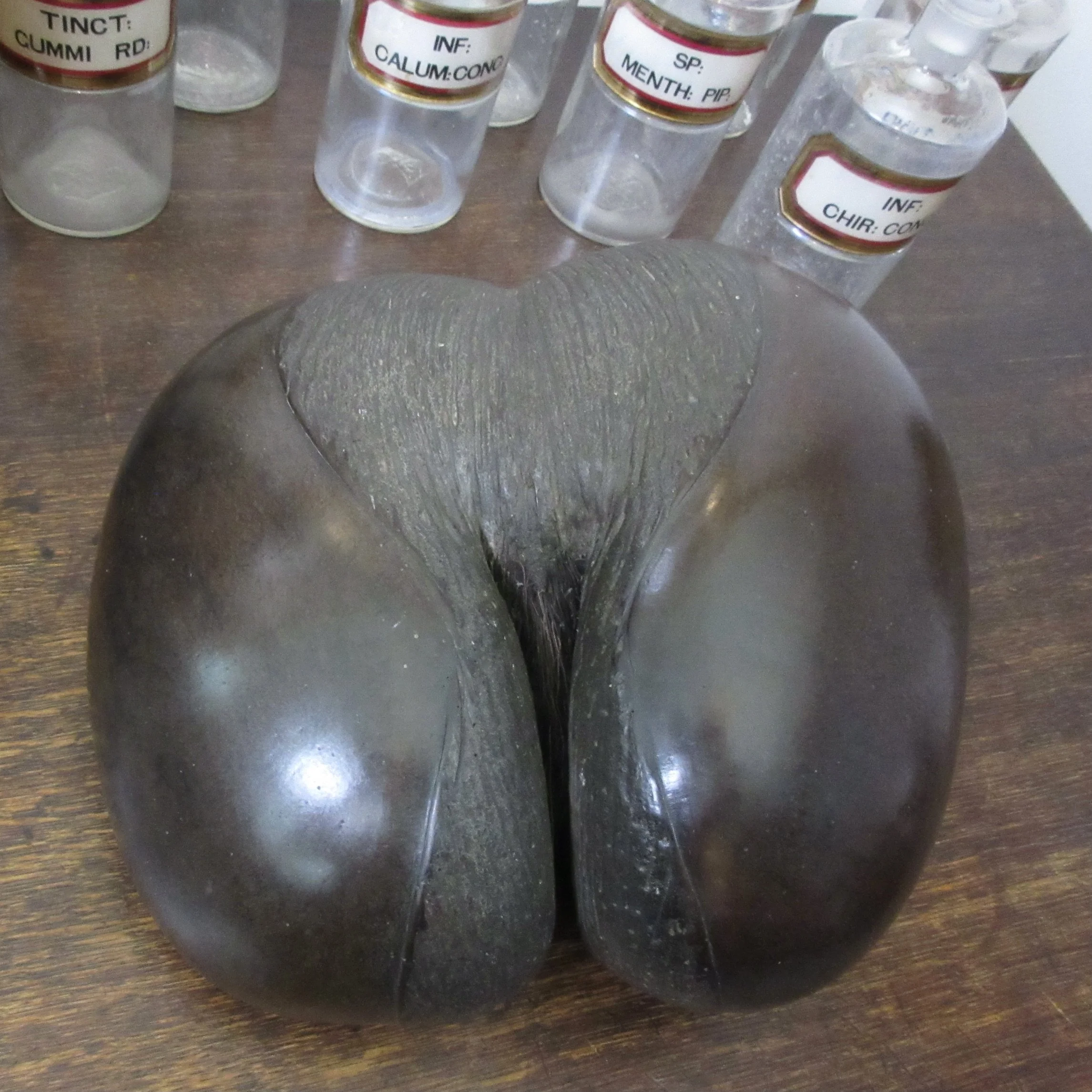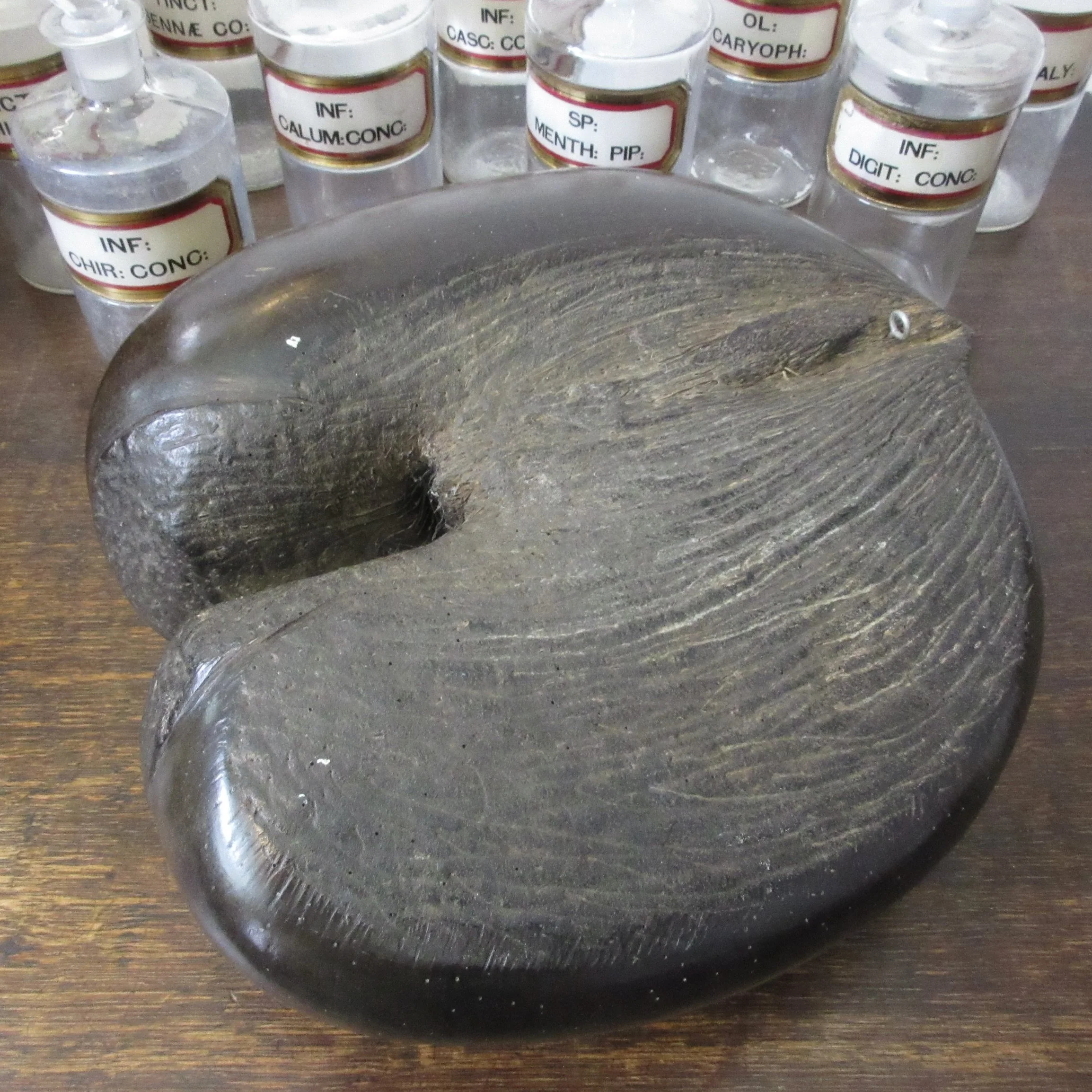Early 19th Century Coco De Mer, Seychelles
Behold the Coco de Mer—a marvel of the natural world and a botanical treasure from the verdant realms of the Seychelles. The Lodoicea maldivica, with its evocative monikers such as the sea coconut, double coconut, or the love nut, is not only a symbol of exotic flora but also a beacon of rarity and allure.
This early 19th-century specimen is a tactile testament to nature’s grandeur. The Coco de Mer is renowned for producing the largest seed in the plant kingdom, a colossal wonder that has captivated the imaginations and desires of collectors and naturalists alike. Its smooth, voluptuous form is reminiscent of a lover’s embrace, giving rise to its affectionate nickname, the love nut.
Originating exclusively from the islands of Praslin and Curieuse in the Seychelles, this seed’s geographical exclusivity adds to its mystique. The Coco de Mer’s habitat is so limited that it whispers tales of a time when pirates and explorers roamed the Indian Ocean, and the Seychelles archipelago was an untamed paradise.
The possession of such a specimen is akin to holding a piece of history—a fragment of an era where nature’s creations were as mysterious as they were magnificent. This Coco de Mer is not merely a seed; it is a relic of the Earth’s botanical heritage, a natural sculpture shaped by the elements, and a cherished jewel of the Seychelles.
Height: 12 inches (30 cm)
Width: 12 inches (30 cm)
Depth: 6 inches (15 cm)
£1,950 | Circa: Early 19th Century | Ref: SA153





